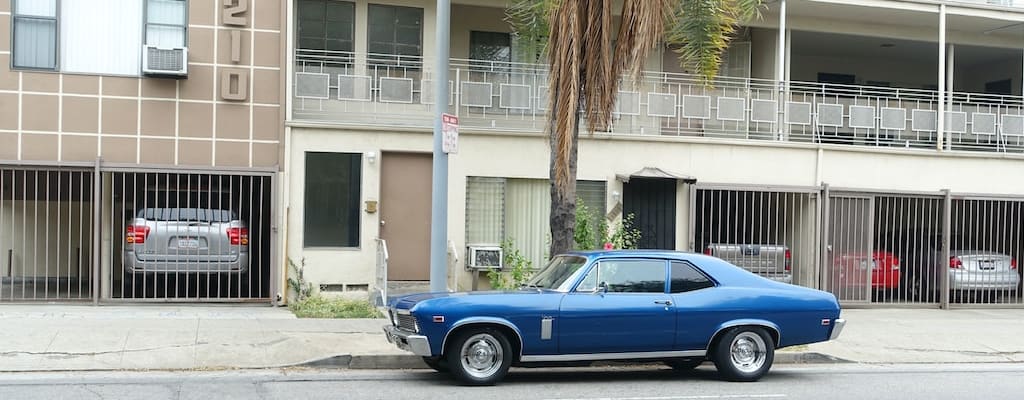late model: Idiom Meaning and Origin
What does ‘late model’ mean?
The idiom "late model" refers to a relatively new or recently released version of a product, typically a vehicle or electronic device. It implies that the model is the most recent and up-to-date in its category.

Idiom Explorer
The idiom "last thing" means the final action or event that occurs before a particular time or event. It emphasizes the timing or order in which something happens. It can also refer to the least important or least desirable action or event in a sequence.
The idiom "last minute" refers to the final moments before a deadline or event. It suggests that something is done or happens with very little time or notice remaining, often causing rushed or stressful situations.
The idiom "Johnny-come-lately" refers to someone who arrives or joins a group or activity late, often when the hard work or difficulties have already been dealt with.
The idiom "Johnny-come-lately" is used to describe someone who has recently joined a group or arrived on the scene. It is often used in a derogatory manner to suggest that the individual is inexperienced or has arrived too late to be of any significance.
The idiom "in this day and age" refers to the present time or era, emphasizing its contrast with the past. It expresses the idea that things have changed significantly and highlights the modern advancements and developments that currently exist.
The idiom "in recent memory" refers to a specific period of time that is easily remembered or recalled. It implies that something is significant or noteworthy within that timeframe.
The idiom "high time" means that something should have happened or should be done immediately, as it is already late or long overdue.
The idiom "high time" is a commonly used phrase in American English. It indicates that something should have happened or been done already because it is long overdue. The phrase expresses a sense of urgency or necessity.
The idiom "get with the times" means to adapt to or accept new ideas, technology, or social norms.
The idiom "get with the times" is a commonly used phrase in English, which means to adapt to or accept new ideas, technologies, or ways of thinking. This idiom emphasizes the importance of staying current and up-to-date in a rapidly changing world.
The idiom "get late" is used to describe a situation when something is taking longer to happen, progress or finish than originally expected or anticipated.
The idiom "full-fledged" means to be fully developed or complete. It is used to describe something or someone that has reached a mature or advanced stage.
The idiom "fashionably late" means to arrive intentionally late to an event or gathering, in order to make a statement or appear more important or desirable.
Hidden Charms Revealed
The idiom "late model" is commonly used in American English, especially in the automotive industry, to refer to a newer version or generation of a particular make or model of a vehicle. It is often used to indicate that a car is relatively new and up-to-date, usually within the past few years. The term is frequently used in advertisements, sales pitches, and discussions related to the purchase or appraisal of automobiles. When a car is described as a "late model," it implies that it offers modern features, improved technology, and a more aesthetically appealing design compared to older or outdated models.
The origins of the "late model" idiom can be traced back to the early 20th century, specifically within the automotive industry. As the manufacturing of automobiles became more prominent and the market became saturated with various makes and models, there arose a need to differentiate between older and newer iterations. The phrase "late model" emerged as a concise way to describe the most recent versions, catering to consumers' desire for the latest and most advanced options.
Interestingly, the idiom "late model" is adaptable beyond the realm of automobiles. While it is most commonly used in relation to cars, it can also be applied to other consumer goods, such as electronics or household appliances. In these contexts, "late model" has a similar meaning, referring to the most recent edition or version of a particular product.
The widespread usage of the idiom "late model" has made it deeply ingrained in American English, particularly within industries that rely on distinguishing between newer and older iterations of products. It is recognized and understood throughout the United States, regardless of region or demographic. This idiomatic phrase reflects the American cultural fascination with novelty, progress, and the pursuit of the latest and greatest.
The idiom "as of late" is another commonly used expression that relates to the concept of time. It suggests a recent occurrence or development. When used in the context of "late model," it could indicate that a particular make or model has been introduced or updated recently. This phrase emphasizes the timeliness and recentness of the car's release or redesign, further highlighting its modernity and up-to-date features.
The idiomatic expression "behind its time" is a contrasting phrase that can be linked to the concept of "late model." It suggests that a car or product is not keeping up with the latest advancements or trends. When a car is described as "behind its time," it implies that it lacks modern features, technology, or design elements that are available in newer models. This phrase can be used to emphasize the outdated nature of a particular make or model in comparison to the latest options.
Another related idiom is "fashionably late," which adds a touch of playfulness to the concept of timeliness. When applied to "late model," it could imply that the release or introduction of a new make or model was deliberately delayed to create anticipation and generate excitement among consumers. This idiom suggests that the car is not only new and up-to-date, but its release was also intentionally timed to create a sense of fashionability and intrigue.
The idiom "get late" relates to the concept of time and can be associated with the phrase "late model." It suggests that something is taking longer than expected or running behind schedule. In the context of "late model," it could imply that the release or availability of a particular make or model was delayed, for various reasons, resulting in its introduction occurring later than anticipated. This phrase highlights the anticipation and eagerness among consumers to get their hands on the latest car models.
The idiom "behind the times" is another contrasting phrase that can be connected to the notion of "late model." It suggests that a car or product is outdated and not in line with current trends or advancements. When a car is described as "behind the times," it implies that it lacks the modern features, technology, or design elements that are available in newer models. This phrase emphasizes the gap between the car and the latest options, underscoring its outdated nature and lack of up-to-date features.
The idiom "late model" is widely used in American English and primarily within the automotive industry. It refers to a newer version or generation of a particular make or model of a vehicle, signaling its recent manufacture and design. The phrase is often employed in advertisements, sales pitches, and discussions related to cars. Additionally, "late model" can be applied to other consumer goods beyond automobiles to indicate the most recent edition or version. Furthermore, idioms like "as of late," "behind its time," "fashionably late," "get late," and "behind the times" add further nuances and meanings to the concept of "late model" by highlighting timeliness, contrast, and delay in various contexts.
Example usage
Examples of how the idiom "late model" can be used in a sentence:
1. He purchased a late model sports car as soon as he got his bonus.
2. The dealership is offering special discounts on their late model inventory.
3. She decided to sell her late model laptop and upgrade to a newer version.
More "Automotive" idioms

